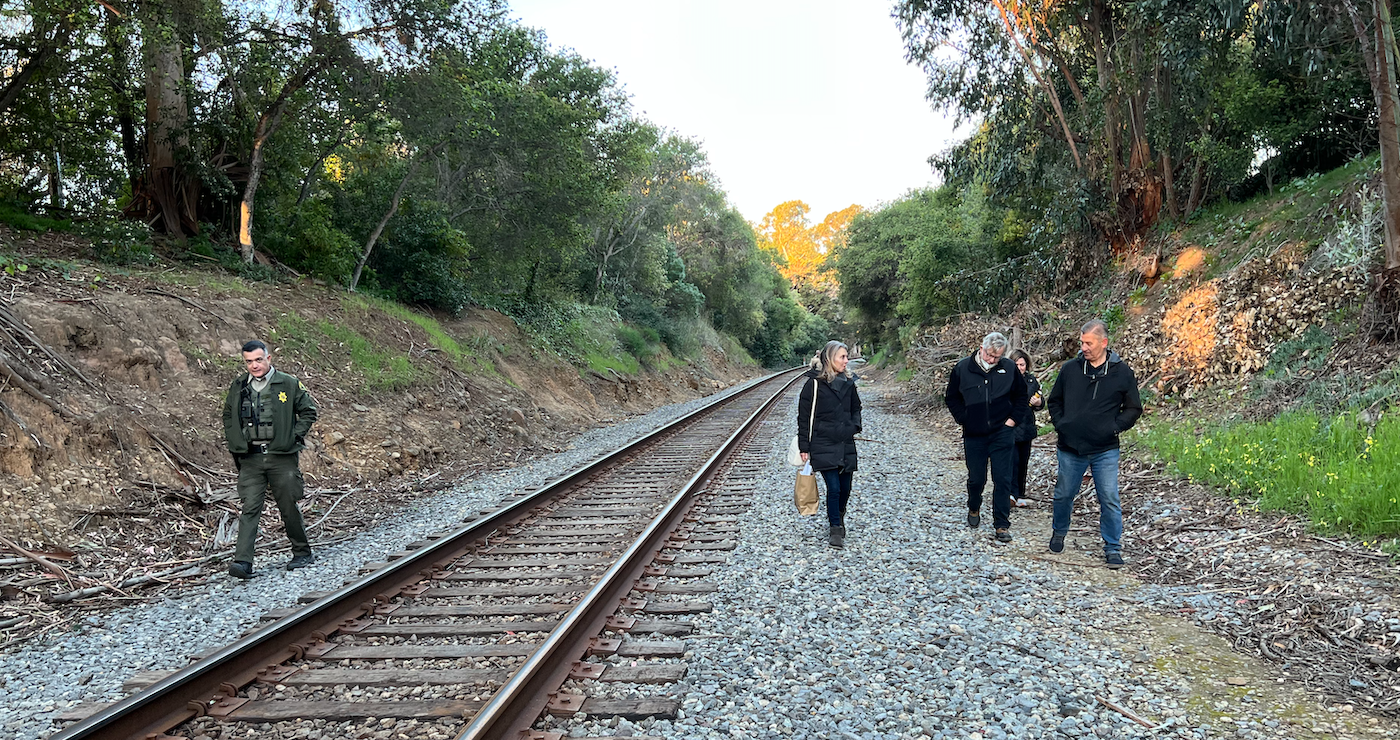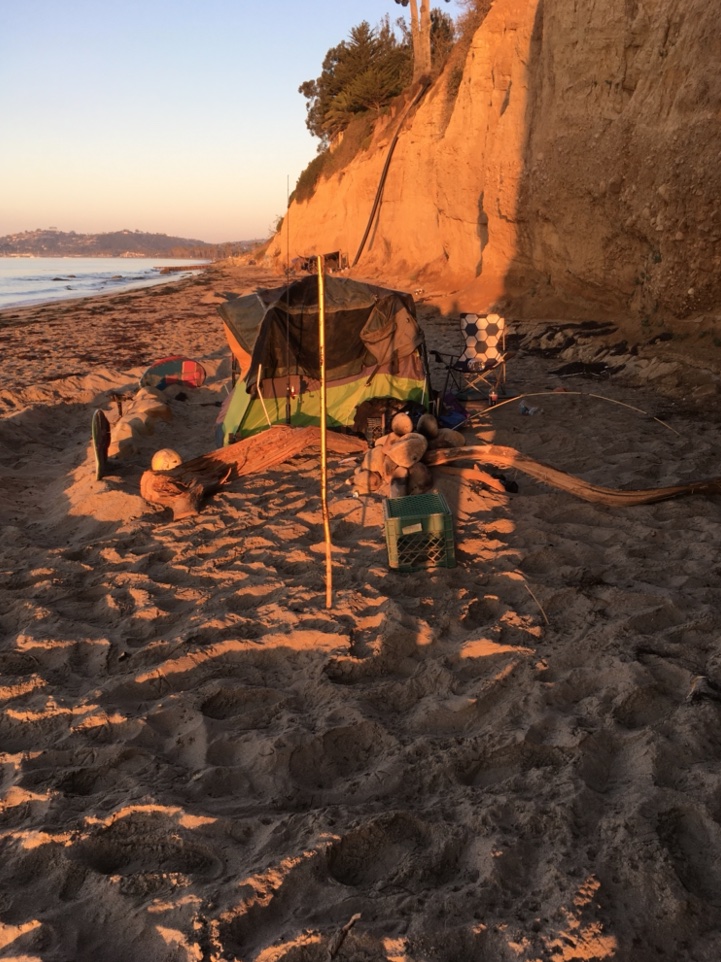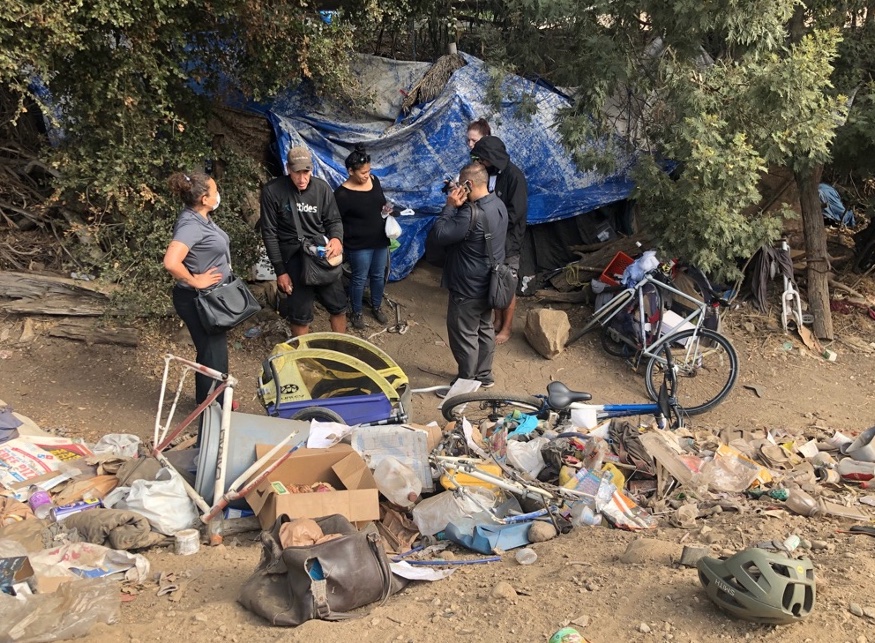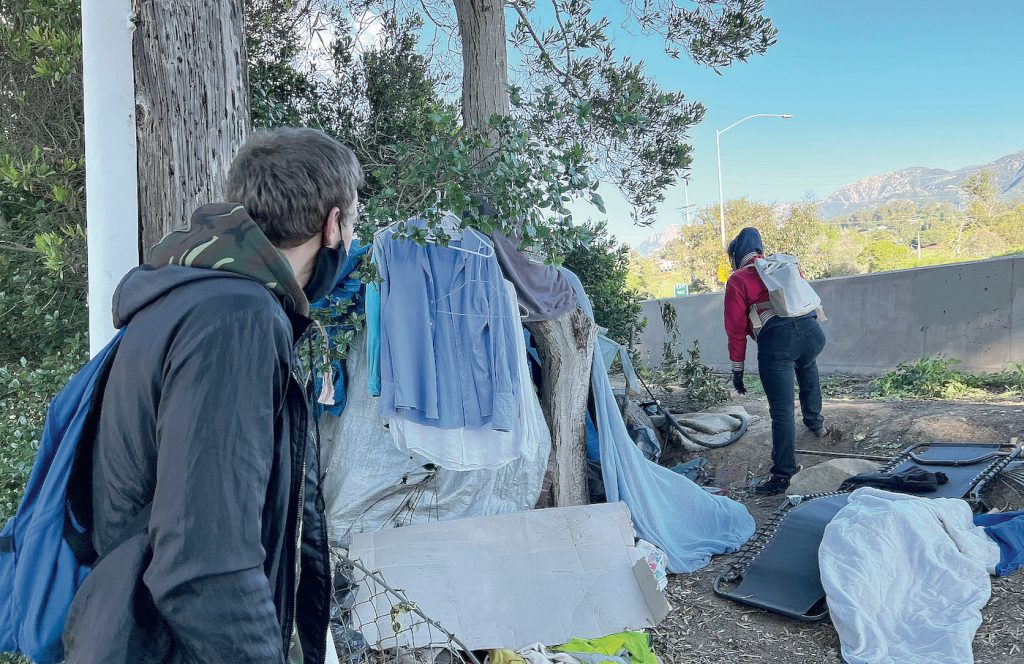A Year Later: Hands Across Montecito The Model That Makes the Difference in Homelessness

In the spring of 2020, as the pandemic unfolded, Montecito neighbors started noticing a significant uptick in homeless individuals on Coast Village Road, traveling along the tracks, and encampments began mushrooming along the freeway. I contacted Luis Alvarado from Santa Barbara County’s Behavioral Wellness Homeless Outreach Team, and we started walking the tracks and outreaching. We found lots of people. Some were locals, ousted from the family home for drug use. Some were chronically homeless that had been here a long time, and some were from out of the area. Neighbors saw us doing outreach visits and started coming with us. Then the fire happened at the Santa Barbara Cemetery in July, and Montecito Fire realized we would see more arson fires unless we did something different. By this time, I had realized that Luis and I and a few neighborhood volunteers would not be enough. We were facing overwhelming odds.

That led to a team forming, consisting of Lt. Arnoldi from the Sheriff’s Office; Chief Taylor of Montecito Fire; Montecito neighbors Andrea Hein, Eileen Read, Jane Olson, Kathy Washburn, Kath Lavidge, and Andrea Newquist; and Montecito Association President Megan Orloff. We met down at the beach, and I proposed we needed a formal outreach project to move people indoors. The team supported this approach, so I reached out to City Net, and we started a conversation about hiring them for Montecito.
We hoped to trial an approach: relentless, compassionate outreach that would offer connection to resources, but insist that if you wanted to continue to live unsheltered and engage in self-destructive behaviors, you need to find a neighborhood that doesn’t care as much as Montecito. We needed to raise $100,000 for the project, which would have a one-year trial run, and we needed to hire City Net to do this outreach.
We gathered a heavy Montecito crew to do a census count in mid-September of 2020. We discovered 26 people living unsheltered in our area. We signed the contract, which prompted the county to sign one with City Net, and then the city of Santa Barbara followed suit by December.
City Net suggested we use county outreach workers for the Hands Across Montecito project, and deploy the funds we raised for solutions: rent, hotel rooms, train, or bus fare to reunite someone with family, etc.
Over the course of 2021, we hustled to get people indoors the moment they said yes, and having our own funds allowed us to skip queues and bureaucratic red tape. If we wanted to place someone in a hotel, we could do it without county approval or wait lists. If someone was ready for sobriety, we could get them a spot in a sober-living facility. If their family was willing to take them in, we got them home.
Here’s how we did:
Funds spent: $68,000
Presently living unsheltered in Montecito area (all within City of Santa Barbara boundary, Caltrans, or Union Pacific territory): 10
Housed: 6
In hotels: 0 (we placed 9 people in hotels as a first step out of homelessness)
Re-homed to family: 7
Left Montecito for another state: 1
Left Montecito for other area in Santa Barbara County: 5
Left Montecito, whereabouts unknown: 1
Incarcerated: 3
Institutionalized for mental disease: 1
Total served by Hands Across Montecito project: 44

We hired Andrew, the first person we housed, to do multiple camp cleanouts in Montecito. He hired some of our people in hotels to help with these cleanouts. Heal the Ocean has become an invaluable partner with Andrew and us in eradicating some of the environmental hazards in camps. Andrew now works across the county.
When the team went out recently, the sheriffs, who always go with us on outreach, were stunned at how clear the area was.
Supervisor Hart, who attended our February board meeting for this project, said that this is the model. The community-based engagement and support that Montecito provided is the only thing that works. Hart said the Hands project is ambitious and aspirational, and the way we’re doing it is exactly what the county is trying to replicate. The county has made a lot of progress, with commitments that have finally come through from the state and federal governments during the pandemic.
We just housed two people last week, after working with them for more than a year now. They moved in on Tuesday, and on Wednesday, they went out with us at 5:30 am for the Point-In-Time count last week. They know some of the people still living unsheltered in our area and were able to convince one of them to accept our help. We counted 10 individuals living unsheltered in the Montecito area during the count. Only 1 individual remained from the original 26 we started with. Two campsites were in the edge of the county’s jurisdiction, but on Caltrans / Union Pacific right-of-way just east of Channel Drive, and the remaining sites were in the City of Santa Barbara’s area on Coast Village Circle, west of Channel Drive, and above Stella Mare’s.
For the first time ever, the area between the Miramar to Butterfly Lane along the tracks and beach was CLEAR.
We learned some big lessons:

- Functional Zero is the way to go– When you aim for functional zero, where homelessness in your community becomes rare and is turned around quickly, you might not get to zero, but you’ll get a heck of a lot closer than if you just try to “manage the problem.”
2. You can’t win them all – Four of the people we have remaining unsheltered are very difficult cases, but they also probably represent the true size of the really intractable problems of those experiencing homelessness.
3. When the community decides to put its hands on a problem, amazing things can happen – Without the Hands team of 15 committed Montecito volunteers, none of this success would be possible.
4. No agency can solve this, but amazing partnerships can move mountains – Sheriffs, Montecito Fire, County Parks and Rec, Heal The Ocean, City Net, Behavioral Wellness, Caltrans, Marborg, and the County have helped us achieve these results.
We’ve had conversations with the City of Goleta and Caltrans on how to replicate this model, so stay tuned for more exciting developments!
If you’d like to contribute to the Hands Across Montecito project or get involved, please see our website at montecitoassociation.org.
Sharon Byrne is the Executive Director of the Montecito Association







